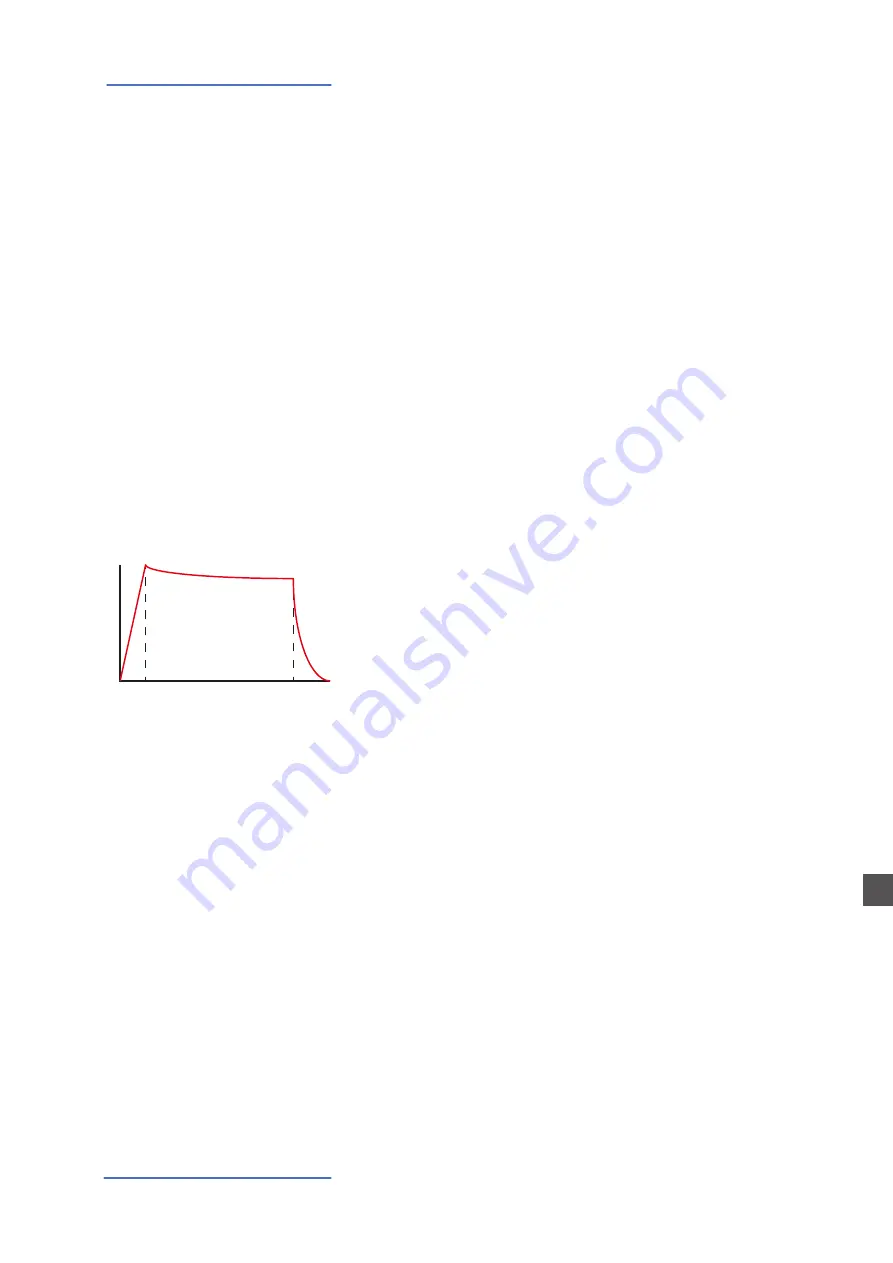
Numa Compact 2/2x
by Studiologic
20
E
Synthesizer Engine
(Numa Compact 2x)
A typical Synthesizer section is made of controls named ADSR
(Attack, Decay, Sustain, Release) and they are normally dupli-
cated for the FILTER and the AMPLITUDE controlled sections.
The simplified parameters available on the NC2x are a sub-set
of these controls, selected from the ones more effective in
the instrument’s SYNTH engine sound generation.
The ATTACK Slider controls the time that the FILTER needs to
reach the desired CUTOFF starting frequency.
The DECAY Slider controls the time that the FILTER needs to
reach the final CUTOFF frequency, when the keys are kept pla-
yed.
NOTE: as a simplified setting, the DECAY also effects the SU-
STAIN Level (a parameter not listed within the nine Sliders) and
a long DECAY time will also simulate the final Cutoff Frequency
almost identical to the starting frequency: the sound will not
change after the ATTACK, while keeping the note played, or it
will change very slowly.
The RELEASE Slider controls the time needed by the FILTER to
reach the final Cutoff when the Keys are released.
The LFO Rate and Speed allow to control the related parame-
ters of the LFO that is internally assigned to the CUTOFF Fre-
quency; as an example, setting the values in a certain way, whi-
le the Resonance is set to mid-hi levels, could create SOUDS
with a kind of looping WOW effect.
NOTE: this LFO’s destination is the FILTER, while the Modula-
tion (Vibrato etc) is controlled either by the STICK 2 and the
AFTERTOUCH, allowing to select all possible combinations of
all settings.
Filter and Amplitude
Envelope
FILTER ENVELOPE
FREQUENC
Y
TIME
ATTACK
DECAY
RELEASE
Slider 3
Slider 4
Slider 5
PLEASE NOTE:
Both Cutoff and Resonance parameters are enabled to control any other Sound of the instrument
(not only Synth Sounds) making possible to edit the starting sound, as an example make a Strings
sound mellower or an Electric Piano sound emphasized at the Cutoff Frequency with the addition
or a certain level of Resonance. As mentioned before, with some setting of the Resonance
you might have to re-balance the part Volume, to avoid clippings of unwanted side-effects, unless
you want to reach a certain sound that could also include some clipping as a desired effect.
PLEASE NOTE:
If set at values too close to the maximum, the Resonance
could create a signal level gain and consequent distortion
possible problems of the overall sound; with hi levels of Reso-
nance, the part Volume (Upper or Lower) should be reduced
proportionally, to avoid clippings or unwanted side-effects.
















































